Discover 15 hidden attractions, cool sights, and unusual things to do in Dijon (France). Don't miss out on these must-see attractions: Church of Notre-Dame of Dijon, Musée Magnin, and Brasserie des Beaux-Arts. Also, be sure to include Archaeological Museum in your itinerary.
Below, you can find the list of the most amazing places you should visit in Dijon (Bourgogne-Franche-Comté).
Table of Contents
Church of Notre-Dame of Dijon
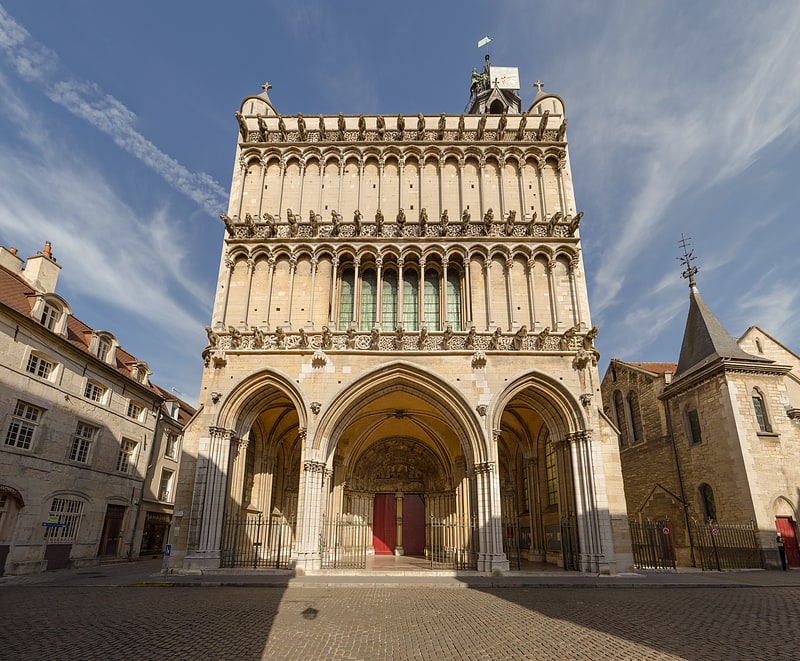
Also known as: Église Notre-Dame de Dijon
Gothic church adorned with gargoyles. The Church of Notre-Dame of Dijon is a Roman Catholic church in Dijon. Considered a masterpiece of 13th-century Gothic architecture, it is situated at the heart of the preserved old centre of the city. It is located in Place Notre-Dame, near the Palace of the Dukes of Burgundy and opposite the rue Musette.
Work on the church began around 1230. The church contains the statue of Notre-Dame de Bon-Espoir, formerly called the Black Madonna. The church's decorations also include two symbols of Dijon: the jacquemart (bell-striking automaton) and the owl. The church was classified as a Monument Historique in the List of historic monuments of 1840. The chapel of the Assumption, the sacristy, and the gallery that links them have been listed as Monuments Historiques since 5 July 2002.[1]
Address: 2 Place Notre Dame, 21000 Dijon (Centre Nord)
Musée Magnin

Museum in Dijon, France. The Musée Magnin is a national museum in the French city of Dijon in Burgundy, in the Côte-d'Or department, with a collection of around 2,000 works of art collected by Maurice Magnin and his sister Jeanne and bequeathed to the state in 1938 along with the hôtel Lantin, a 17th-century hôtel particulier in the old-town quarter of Dijon where it is now displayed as an amateur collector's cabinet of curiosities and as the Magnin family home.[2]
Address: 4 Rue des Bons Enfants, 21000 Dijon (Centre Sud)
Brasserie des Beaux-Arts
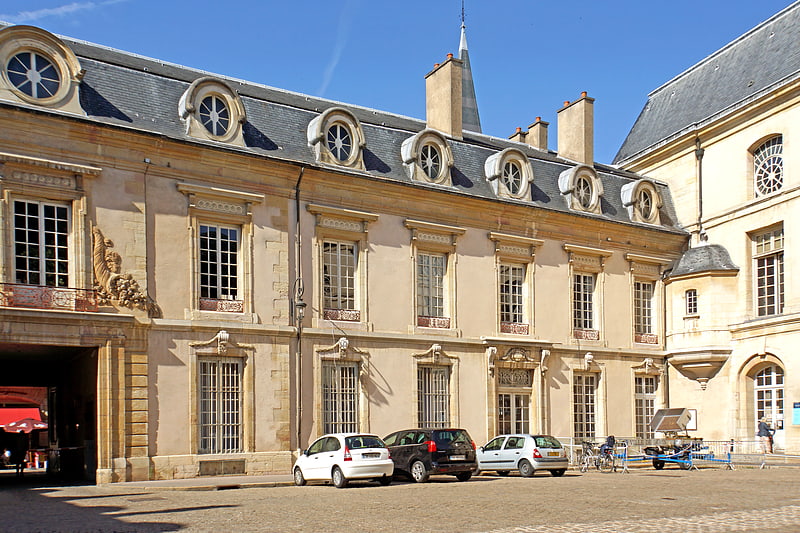
Also known as: Musée des beaux-arts de Dijon
Museum in Dijon, France. The Musée des Beaux-Arts de Dijon is a museum of fine arts opened in 1787 in Dijon, France. It is one of the main and oldest museums of France. It is located in the historic city centre of Dijon and housed in the former ducal palace which was the headquarters of the Burgundy State in the 15th century. When the duchy was assimilated to the Kingdom of France, the palace became the house of the King. In the 17th century it became the Palace of the Dukes of Burgundy following a project by Jules Hardouin-Mansart.
Since 2006, the museum has been in a process of full renovation and extension. First, the work focused on one part including the renovated route “Middle-Ages – Renaissance”, inaugurated on September 7th 2013. The fully-renovated museum displaying 1500 works of art in 50 different rooms was inaugurated on May 17th 2019 in the presence of the Minister for Culture Franck Riester, the former French President François Hollande and the Mayor François Rebsamen.[3]
Address: 1-3 Place des Ducs de Bourgogne, 21000 Dijon (Centre Sud)
Archaeological Museum
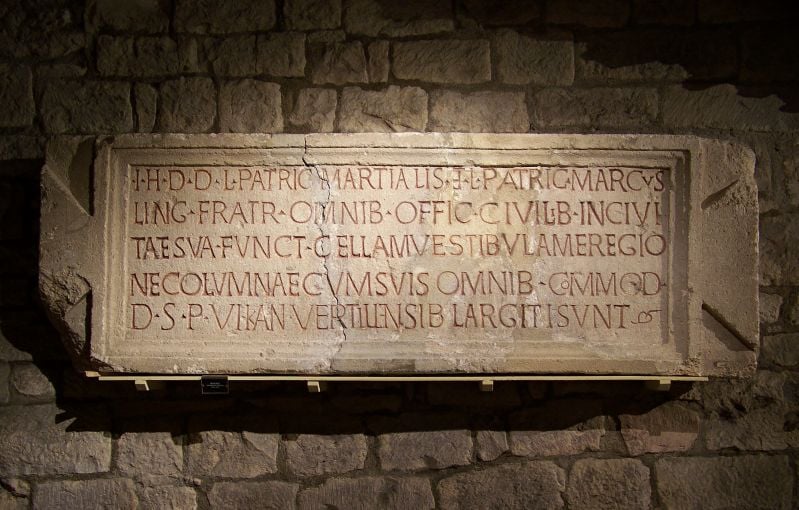
The Musée Archéologique de Dijon is an archaeology museum focusing on the archaeology of Burgundy that was founded in 1832 in Côte-d'Or within Dijon, France. It contains collections regarding "the men of Burgandy" that covers the periods of prehistory, protohistory, the rule of Ancient Rome, and the Middle Ages as well as collections of paleochristian art, sacred art, and church architecture. The museum's collection and location have been housed since 1934 in the main wing of the Abbey of St. Bénigne, situated next door to the Dijon Cathedral.[4]
Musée Rude
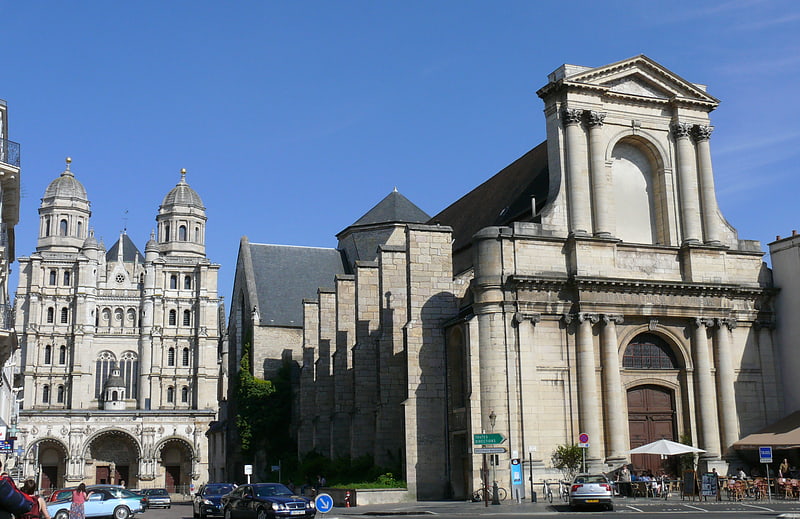
Museum in Dijon, France. The Musée Rude is an art museum dedicated to the French sculptor François Rude. It has the "Musée de France" label and has been housed since 1947 in a part of the former Église Saint-Étienne of Dijon, built during the 11th century. The museum displays life-size plaster casts acquired by the Dijon municipality between 1887 and 1910, which are major works by the artist exhibited in other museums in France. The museum also displays archaeological crypt of the 11th century and the former St. Stephen's Gate of the Dijon castrum of the 3rd century on which the church is built. Open from 9:30 am to 6 pm from 1 June to 30 September, the museum is free.[5]
Address: 8 Rue Vaillant, 21000 Dijon (Centre Sud)
Dijon Cathedral
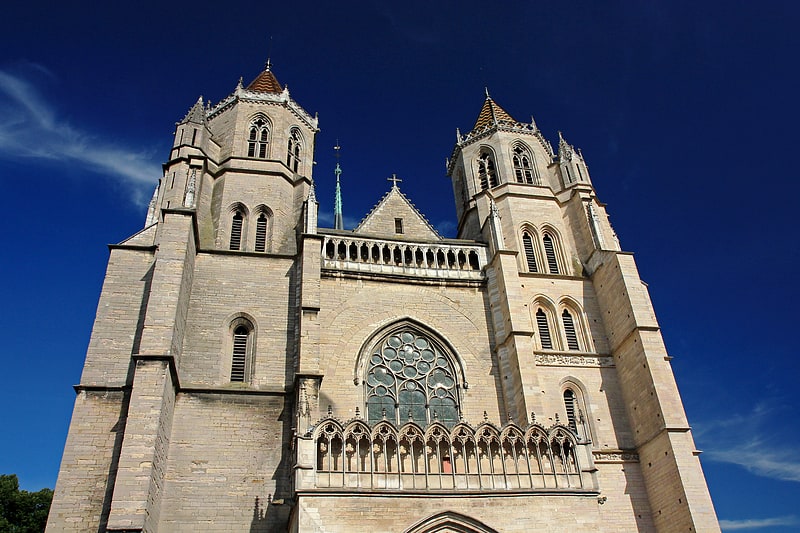
Also known as: Cathédrale Saint-Bénigne de Dijon
Striking early medieval church edifice. Dijon Cathedral, or at greater length the Cathedral of Saint Benignus of Dijon, is a Roman Catholic church located in the town of Dijon, Burgundy, France, and dedicated to Saint Benignus of Dijon. The Gothic cathedral building, constructed between 1280 and 1325, and dedicated on 9 April 1393, is a listed national monument.
Originating as the church of the Abbey of St. Benignus, it became the seat of the Diocese of Dijon during the French Revolution, replacing the previous cathedral when it was secularised, and has been the seat of the succeeding Archbishopric of Dijon since the elevation of the diocese in 2002.[6]
Address: Pl. Saint Bénigne, 21000 Dijon (Centre Nord)
Champmol

Monastery. The Chartreuse de Champmol, formally the Chartreuse de la Sainte-Trinité de Champmol, was a Carthusian monastery on the outskirts of Dijon, which is now in France, but in the 15th century was the capital of the Duchy of Burgundy. The monastery was founded in 1383 by Duke Philip the Bold to provide a dynastic burial place for the Valois Dukes of Burgundy, and operated until it was dissolved in 1791, during the French Revolution.
Called "the grandest project in a reign renowned for extravagance", it was lavishly enriched with works of art, and the dispersed remnants of its collection remain key to the understanding of the art of the period.[7]
Address: 1 boulevard Chanoine Kir, Dijon (Hôpital)
Jardin de l'Arquebuse

Also known as: Jardin botanique de l'Arquebuse de Dijon
Botanical garden in Dijon, France. The Jardin botanique de l'Arquebuse is a botanical garden and arboretum located at 1 Avenue Albert-Premier, Dijon, Côte-d'Or, Bourgogne, France. It is open daily without charge.
The garden is located within a larger park and garden (5 hectares) created on the former 16th-century training grounds for chevaliers of the arquebus. There, in the late 18th century, the chevaliers' last captain built an English garden on the site to designs by noted landscaper Jean-Marie Morel, which in 1803 became city property. In 1833 the plants from Dijon's first botanical garden, established 1771 by writer Bénigne Legouz de Gerland (1695–1774), were transferred to form today's botanical garden, which was named a Conservatoire Botanique Régional in 2002.
Today the garden contains nearly 4,000 plant species with an emphasis on the flora of Bourgogne. Its collections include a systematic collection (3,352 taxa), regional flora of Bourgogne (1,423 taxa), French native plants (789 species), and 1,140 species from the rest of the world, with specimens of ornamental plants, food plants, succulents, carnivorous plants, subtropical plants, and Mediterranean plants. It also contains an arboretum, a herbarium containing about 100,000 specimens, greenhouses, and a school of botany, as well as an extensive collection of Anatidae (wild ducks, geese, and swans).[8]
Address: Jardin de l'Arquebuse, 21000 Dijon (Hôpital)
Lac Kir
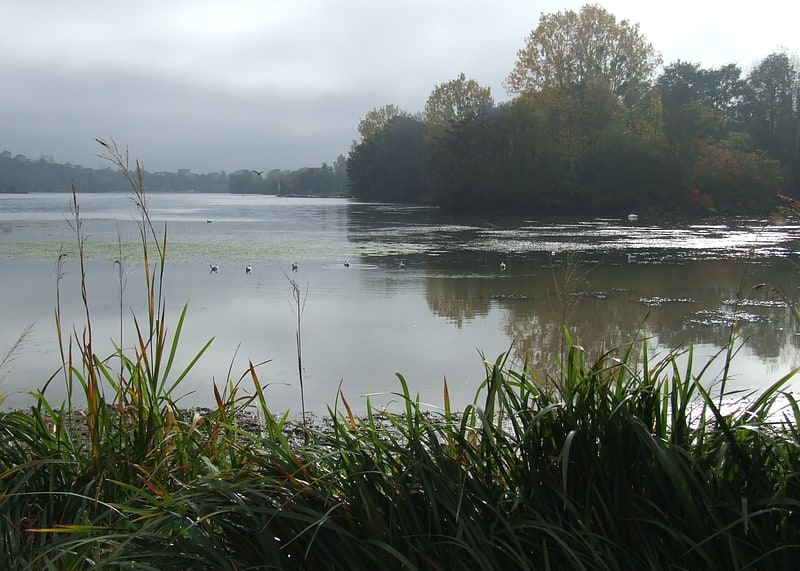
Manmade lake with parks and a beach. Kir Lake is an artificial lake located south west of Dijon, France. Traversed by the Ouche, it was completed in 1964 and named after Félix Kir, the mayor of Dijon and the lake's creator.[9]
Musee d'Art Sacre
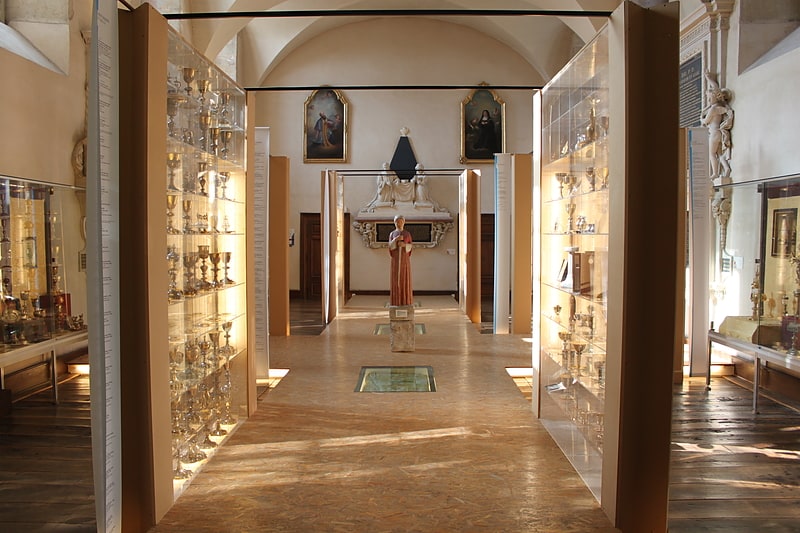
Also known as: Musée d'art sacré de Dijon
Museum in Dijon, France. The Musée d'art sacré de Dijon is a municipal museum of Catholic Burgundian sacred art inaugurated in 1980 by Canon Jean Marilier in the Église Sainte-Anne of Dijon. It is labeled "Musée de France" and was associated in 1993 with the Musée de la Vie Bourguignonne Perrin Puycousin located in the nearby monastery. In 1950, the city of Dijon bought the Église Sainte-Anne located at the 17 rue Sainte-Anne to house the museum in 1979. It exhibits sculptures, paintings, furniture, objects of Catholic worship and many relics, which the Church abandoned their use in various religious reforms. In the grandstands there is a large collection of religious clothing, mainly of the 19th and 20th centuries. The museum gathers liturgical objects of the 12th to the 19th century used for Catholic worship, and shows the lives of communities of women belonging to various spiritual families. There are many works by Jean-Baptiste Bouchardon.[10]
Address: 15 Rue Sainte-Anne, 21000 Dijon (Centre Sud)
Well of Moses
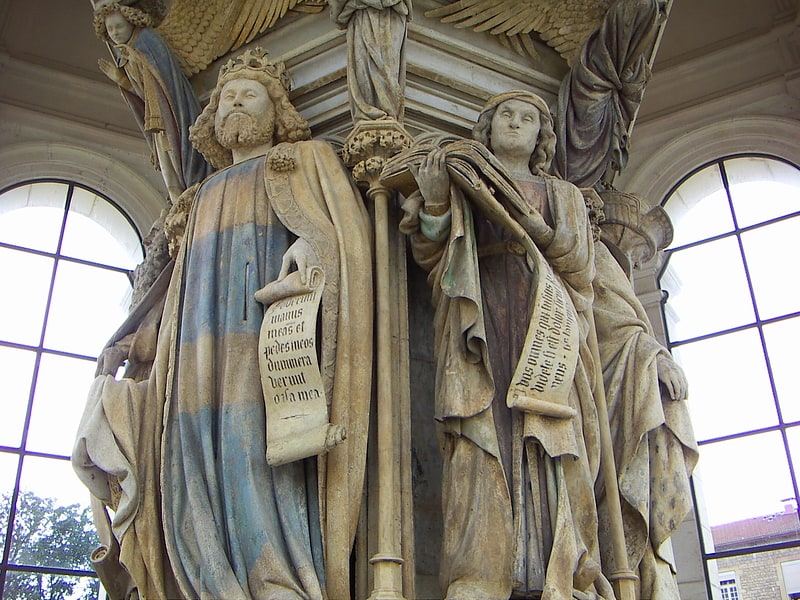
Also known as: Puits de Moïse
Ornate 14th-century necropolis sculpture. The Well of Moses is a monumental sculpture recognised as the masterpiece of the Dutch artist Claus Sluter, assisted by his nephew Claus de Werve. It was executed by Sluter and his workshop in 1395–1403 for the Carthusian monastery of Chartreuse de Champmol built as a burial site by the Burgundian Duke Philip the Bold just outside the Burgundian capital of Dijon, now in France.[11]
Couvent et Basilique Saint-Bernard
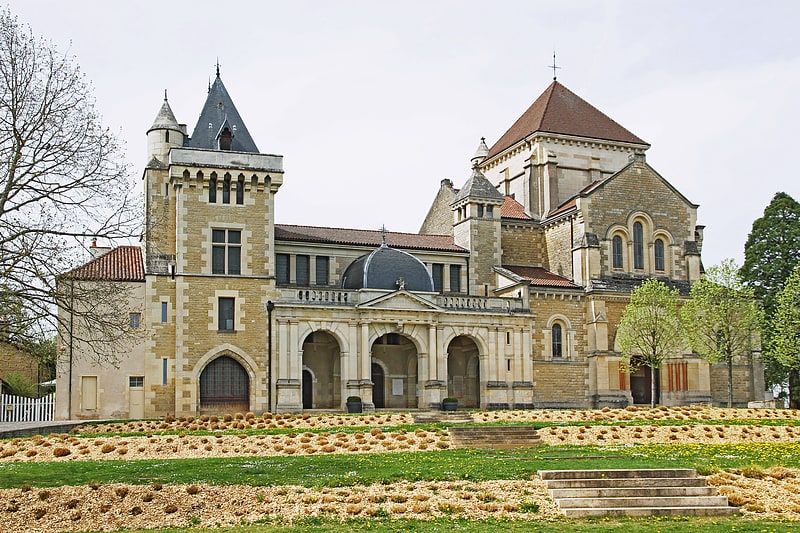
Also known as: Château et basilique de Fontaine-lès-Dijon
Religious destination in Fontaine-lès-Dijon, France. The Couvent et Basilique Saint-Bernard is a group of buildings in Fontaine-lès-Dijon, France, including a convent, basilica and church set in a public park. The complex contains the birthplace of Saint Bernard of Clairvaux, the main reformer of the Cistercians. The present buildings date no further back than the late middle ages, and have been greatly modified since then, with a major renovation in the late 19th century.[12]
Palace of the Dukes of Burgundy
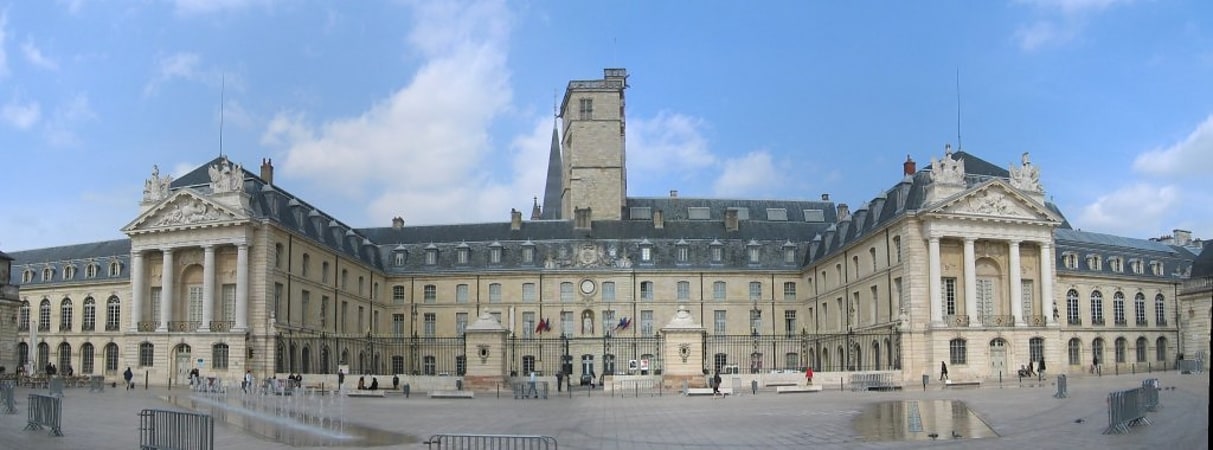
Also known as: Palais des ducs de Bourgogne
Large, historic palace museum. The Palace of the Dukes and Estates of Burgundy or Palais des ducs et des États de Bourgogne is a remarkably well-preserved architectural assemblage in Dijon. The oldest part is the 14th and 15th century Gothic ducal palace and seat of the Dukes of Burgundy, made up of a logis still visible on place de la Liberation, the ducal kitchens on cour de Bar, the tour de Philippe le Bon, a "guette" overlooking the whole city, and tour de Bar. Most of what can be seen today, however, was built in the 17th and especially the 18th centuries, in a classical style, when the palace was a royal residence building and housed the estates of Burgundy. Finally, the 19th façade of the musée on place de la Sainte-Chapelle was added on the site of the palace's Sainte-Chapelle, demolished in 1802. The Palace houses the city's town hall and the musée des Beaux-Arts.[13]
Address: 2 rue Berbisey, Dijon (Centre Sud)
Le Consortium
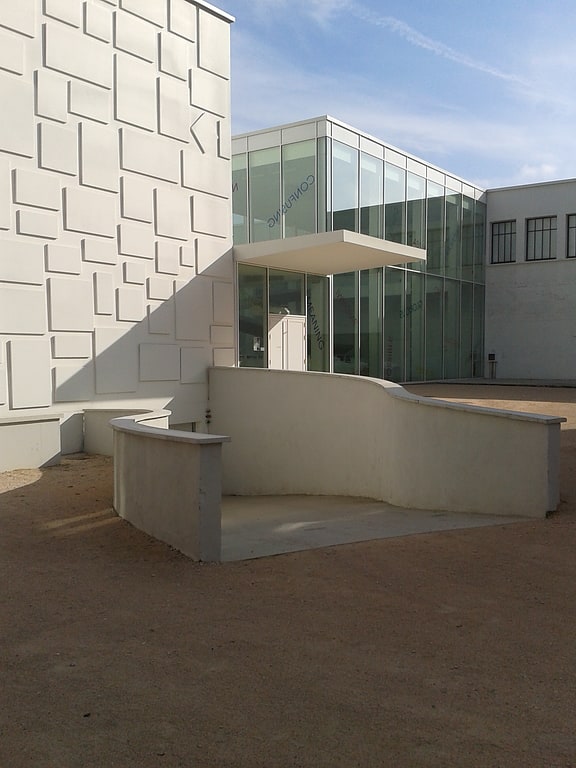
Art museum in Dijon, France. Le Consortium is a contemporary art center based in Dijon founded by Xavier Douroux & Franck Gautherot, among others, from the association Le Coin du Miroir. The center was run by Douroux, in collaboration with Gautherot and Eric Troncy. In 1982, The consortium was awarded the Art Center label, and moved to an old 600 m2 appliance store in downtown Dijon and in 1983, Le Coin du Miroir, À La Limite and Déjà Vu joined and became a single entity. In 1991, Le Consortium expanded by moving to a 4,000 m2 factory on the outskirts of Dijon. In 1996, Troncy joined Le Consortium as co-director and in 2000, Kim Seung-duk joined as co-curator and director of international development. In 2009, Le Consortium launched an office on Hoxton Street in London, directed by Sophie Claudel and in 2011, a new building was opened, designed by Shigeru Ban[14]
Jardin Darcy

The Darcy Garden or Darcy Square is a neo-renaissance public garden in the Place Darcy, in the center of Dijon in the Côte-d'Or. It is dedicated to the hydraulic engineer Henry Darcy.
Address: Place Darcy, Dijon (Faubourg Nord)